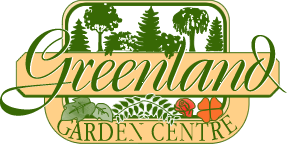Understanding Pesticides & Pest Control
Common garden insect pests such as aphids, spider mites, sawflies, leaf miners, various types of caterpillars, and more exploded in population this summer due to the heat and relatively dry conditions we have experienced in most of Alberta. This has got many gardeners wondering what they can do to control these pests and how they can prevent problems in the future. With many becoming increasingly concerned with pesticide use, our 630 CHED Garden Show hosts want to explain pesticides and how they and other tools can be used to combat garden pests.
Integrated Pest Management (IPM)
IPM is a set of practices that are used by horticulturists and other green professionals to manage plant pests. The aim of IPM is to use a variety of tools to control pests which combined are more effective than any single solution. Usually, pesticides are treated as a last resort in IPM programs. The most common tools employed are:
Preventative control measures:
- Choosing plant varieties that are resistant to pests
- Starting with healthy, pest-free plant material
- Ensuring soil and growing media are pest-free
- Regular scouting for pests to ensure early detection
- Good sanitary practices – i.e., keeping tools clean, removing diseased or infested plant material from growing areas, not using infested material in compost, etc.
- Keeping plants healthy (and therefore resistant to pests) by planting in the right location and using proper planting technique, soil, watering, nutrients, etc.
- Using deterrents or barriers for animal pests such as Plantskydd or trunk wraps
Mechanical control measures:
- Hand-picking insects from plants
- Washing insects off with a strong jet of water
- Pruning affected areas off plants
- Using traps for insect pests
Biological control measures:
- Beneficial bacteria such as BTK
- Nematodes
- Predatory insects such as ladybugs
Chemical control measures (pesticides)
If you use an IPM approach to manage pests in your garden or houseplant collection, you will have more success in keeping insects at bay. Prevention is your first line of defense and paying attention to this area will greatly limit the number of pests you have to deal with. At the first sign of a pest, mechanical control measures will often be sufficient.
Biological controls are the best way to control several common pests. They have the benefit of being specific to certain pests, so they won’t harm wildlife or the environment, and they are completely safe to use. However, they are only useful on those specific pests, and not all pests have a useful biological control. As well, the timing of when these controls are used is important, and biological controls will not eradicate pests, but rather keep their numbers low.
About Chemical Insecticides
When other control methods fail, we sometimes have to resort to chemical controls: pesticides. The term “pesticide” is a broad term for any pest control product (chemical or biological), including insecticides, fungicides, bactericides, herbicides, rodenticides, etc. The sale and use of all pesticides is heavily regulated in Canada and is further regulated by provincial and local governments. For any pesticide product to be sold in Canada, it must first be registered with the federal government. Companies selling pesticides are required to keep their registrations up to date, so as regulations change, pesticides can disappear from the market, or change trade names.
The government separates pesticides into two broad categories: domestic pesticides and commercial pesticides. Domestic pesticides are those that are available for consumers to purchase from garden centres and other retail vendors. Commercial pesticides are only available to professionals such as certified pesticide applicators, farmers, commercial greenhouse growers, etc.
In 2022, the number of domestic pesticides available on the market in Canada is quite limited. For insect control, only contact insecticides are available; these products must touch the pest to kill it. Systemic insecticides, those that are absorbed by the plant so that insects are poisoned as they feed on it, are now all commercial products only.
It is important to read and follow label instructions on any pesticide product. Keep in mind that chemical insecticides are non-selective and can kill any insect they contact. Below is some information on the domestic insecticides available in Alberta.

While registered as chemical pesticides, insecticidal soaps are the mildest form of chemical control, and are allowed in organic gardening. These products work on soft-bodied insects such as aphids by drying them out. We recommend using insecticidal soap over household soaps as they are safer to use on most plants (always test any chemical product on a small area of sensitive or expensive plants first).

Pyrethroids are the group of insecticides that make up most domestic products on the market, and they affect the nervous system of insects. They are relatively safe to use because they have very low toxicity to mammals, and they degrade rapidly in the environment. They are, however, very toxic to aquatic life and should never be used in proximity to open bodies of water. Natural pyrethrin, derived from the chrysanthemum, is allowed in organic production, while synthetic pyrethroids are not. Some examples of products that belong to this group are Doktor Doom, Safer’s End-All, and Ambush.

Malathion is the only other domestic insecticide available in Alberta, and it belongs to the organophosphate group. These chemicals are enzyme inhibitors. Malathion is more toxic to people than pyrethroids and more readily absorbed into the skin. It also persists in the environment for longer. For these reasons, we only recommend using malathion when absolutely necessary. The product is safe to use when applied as directed. It’s currently being sold in Canada under the trade name Wilson Bug-X Out.
